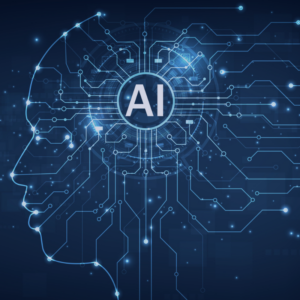So much ink is being spilled about the future that it is easy to lose sight of what is essential. Digital transformation is a state of mind characterized by adaptation and continuous change. To the same extent as all changes, this transformation has the meaning of the term used to qualify it, in this case the term digital.
This term is found everywhere, from the economy to identity as well as technologies, infrastructures, platforms, media, production methods and innovation. However, the term digital also means number. Digital transformation therefore means translating these various aspects into numbers. In the 21st century, these aspects are based on the exploitation of information in the form of binary computer coding. Whether it is computers, phones, screens, objects connected to Internet, networks, contents, processes, big data transformed into information by supercomputers, algorithms or artificial intelligence, digitization is at the heart of the change that individuals, companies, organizations and society in general are going through.
Where to start?
From the beginning, plainly. Companies have set their sights on digital transformation, as their growth and their sustainability are more than ever dependent on it. They know they must immediately reconsider their working methods and develop their tools. They must ensure that their culture, structure and mission are being adapted to the current exceptional circumstances. They are aware that it is essential that their teams be able to interact remotely with one another. Finally, they realize that the key to success is their ability to take risks.
- How can the weight of these factors in decision-making be determined?
- How can these factors be aligned with short, medium and long-term objectives?
- What does a risk management process that allows for anticipation of problems and solutions look like?
- Where does one start to ensure a successful digital transformation?
The digitization on which it is important to focus immediately is that of processes, methods and tools that solve human challenges. At this time, protecting the health of individuals is a critical human challenge. In order to solve this challenge, public health authorities have issued social distancing guidelines. In response to the latter, telework has been established as a solution that ensures teams’ security, business continuity, asset safeguarding and client relationship durability. This example of adaptation to a new reality clearly illustrates it; the most important technology is that which serves human beings.
Furthermore, digital transformation is not limited to cloud computing. It also allows for the calculation of the flattening of a propagation curve in order to maintain a sufficiently low infection rate not to overwhelm health systems. It makes it possible to be present, work, serve clients and socialize remotely. It enables the resolution of hypercomplex problems with multiple ramifications on a company, community or society scale. In conclusion, the best option is always to start from the beginning. This is therefore the pragmatic action plan proposed by Cofomo.
An action plan adapted to the new reality
Cofomo offers you its team of experts in strategic consulting, digital innovation, change management and business and information technology (IT) governance to help you with your transformation, according to the level of organizational, technological and business maturity of your company. The benefits for your company are concrete, where it really counts. Here is an overview.
- Optimized value chain thanks to technological innovations which increase productivity and reduce operating costs
- Client approach reinforced by the mapping of contact points and the optimization of the path in the interactions with products and services
- Digitized processes by the automation of what improves quality, reduces processing times and optimizes operational efficiency
- Business intelligence that enables the execution of the company’s strategy based on up-to-date, reliable and value-added data
- Mobility and connected objects that respond to the new uses as well as the new ways of doing things (telework, cloud computing, contactless payment solutions, electronic signatures, etc.)
- Motivated teams that are digital aficionados, always looking to take up challenges and acquire new skills
What will history remember of this unprecedented period? That solving complex problems requires a vision of the future which is based on consultation, teamwork, an action plan adapted to the changing reality, and innovation.
Technologies that offer real value added are those that place human beings at the heart of decisions. It is, undoubtedly, what we will remember with the most pride once a recovery begins. And there will be a recovery!





